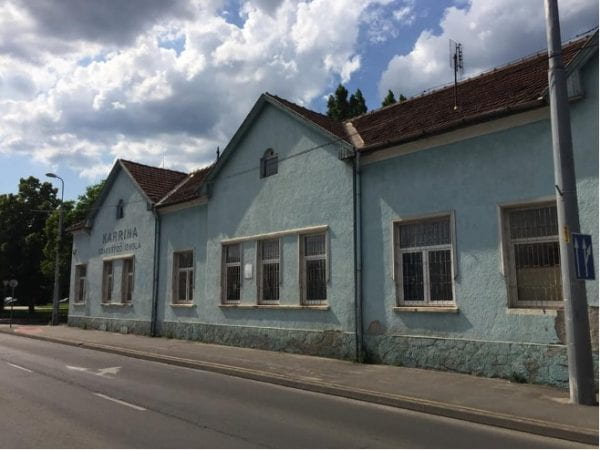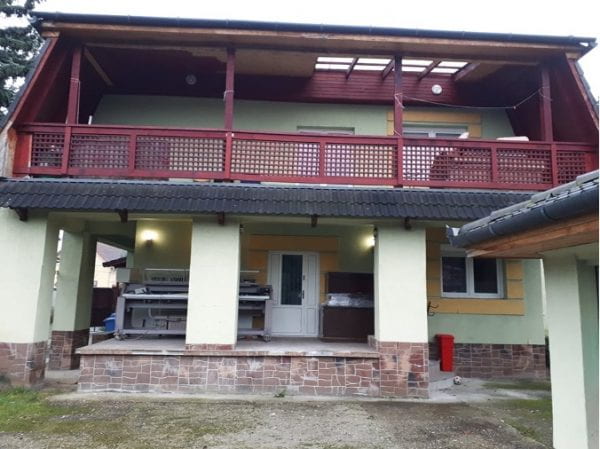

 The last two months have been full of planning meetings and collaborations with our project partners in Hungary. One of our first activities in April was to hold a Zoom meeting with the founders of the Dr. Ámbédkar School, János Orsós and Tibor Derdák, along with Nóra Tyeklár, director of the dormitory, and Roland Imre, the school’s financial officer. We discussed the unique nature of the school and the transformative impact they would like to see through the Davis Projects for Peace grant.
The last two months have been full of planning meetings and collaborations with our project partners in Hungary. One of our first activities in April was to hold a Zoom meeting with the founders of the Dr. Ámbédkar School, János Orsós and Tibor Derdák, along with Nóra Tyeklár, director of the dormitory, and Roland Imre, the school’s financial officer. We discussed the unique nature of the school and the transformative impact they would like to see through the Davis Projects for Peace grant.
The school staff stressed the importance of personal connections as an opportunity for students to learn about the world outside of their immediate communities. Many students at the Dr. Ámbédkar School are of Romani ethnicity and come from socially marginalized and economically disadvantaged communities. In Hungary, as well as much of east central Europe, only a small percentage of Romani youth complete more than eight years of schooling. In Borsod, the county in which the Dr. Ambedkar School is located, ranks among the most economically disadvantaged regions in the European Union and school dropout rates are among the highest nationally.
To address these needs, János Orsós and Tibor Derdák founded the Dr. Ámbédkar School in 2007 in Sajókaza, Hungary. Its namesake is Dr. Bhimrao Ramji Ambedkar; it is the only high school in Europe founded in Ambedkar’s name. Today, Ambedkar is remembered for his steadfast quest for social justice for the oppressed castes (Dalits) in India. A Dalit himself educated at Columbia University and the London School of Economics, he led the Dalit movement in India until his death, in the process authoring the constitution of free India in 1950.
Ambedkar inspires the school in its mission to empower Romani youth. Over the past thirteen years, first in Sajókaza and today in its expanded campus in Miskolc, 113 adult students have completed primary school education and 114 students have taken a graduation exam in one or more subjects. In 2018, the school expanded its outreach to students in neighboring villages in northeastern Hungary and eastern Slovakia with the opening of the Martin Luther King Jr. Dormitory.
The Davis Project will help carry the school into its next phase of expansion and development. Infrastructural improvements to the schoolyards, including sports fields and community gardens, will provide spaces for the students to engage in team building exercises and help them form stronger connections with their environment. Additionally, the school’s leadership team spoke enthusiastically about the opportunities for lasting and deep institutional and personal ties between the students at the school and the wider University of Chicago International House community. As such, we are striving to build social and personal ties with the school alongside these critically important infrastructural projects.
This project has brought together a wide network of organizations across Hungary. One key partner is the LADDER (Laboratory with Kids for Democratic School Environments) Living Lab, which itself unites the work of the Institute of Landscape Architecture, Urban Planning & Garden Art of the Hungarian University of Agriculture and Life Sciences and the KultúrAktív Association, which contributes a specialization in built environment education. Through trainings, informational meetings, and group discussions, we have already learned a great deal from the LADDER team, who have introduced us to their philosophy and practice of student- and community-centered urban planning and environmental education. Thus, the Davis Project has opened yet another avenue for transnational, cross-institutional collaboration.
Of utmost importance to all of us is that students feel engaged and involved in all stages of the project’s development. In order to facilitate discussions with students and teachers at the school and solicit their input on the development of the schoolyard, we spoke with a team of representatives from the LADDER Living Lab, including Anita Reith, a PhD student and lecturer at the Hungarian University of Agriculture and Life Sciences (as well as freelance landscape architect) and Anna Szilágyi-Nagy, president of KultúrAktív. A few weeks ago, the team traveled to Miskolc and held two roundtables with the school community to identify challenges at the school and to devise a common vision on how to address these.
In the next blog posts, we have invited Anita to introduce our institutional partners in Hungary, to describe the community-centered, democratic approach to project development the LADDER Living Lab team has devised, and to describe the key findings of the workshops. These ideas drive the project today as it moves into the construction phase.
Thank you to Roy Kimmey for his continuing assistance and for his help in preparing this post!